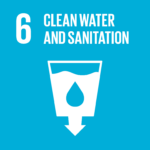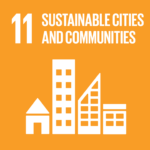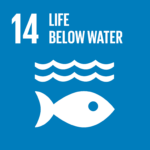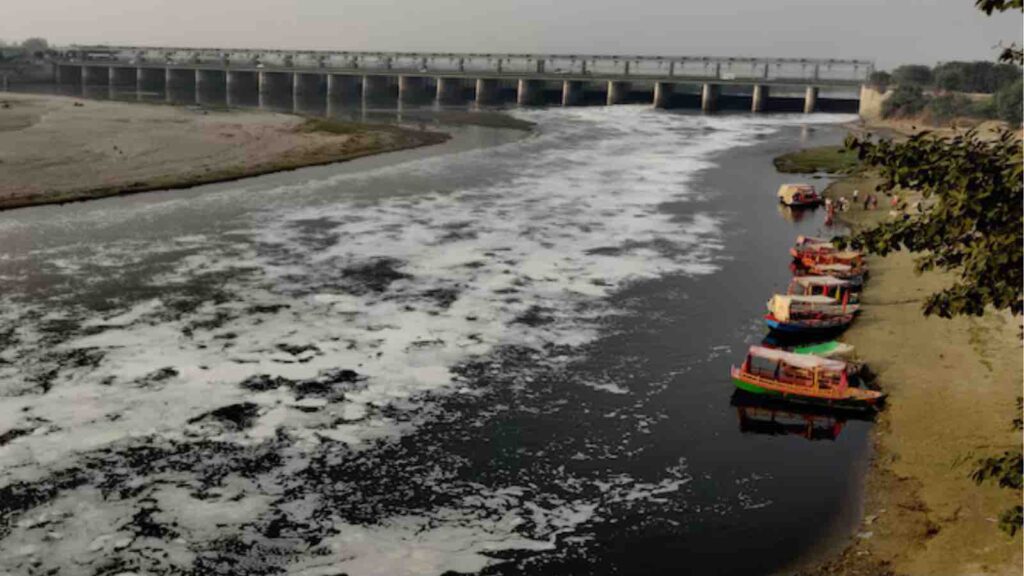A three-year mission to restore the Yamuna River. The initiative, backed by the Delhi government and Lieutenant Governor VK Saxena, aims to remove untreated sewage, industrial waste, and accumulated debris, which have rendered the river hazardous to both human health and the ecosystem.
Delhi has officially launched a three-year plan to clean up the heavily polluted Yamuna River, deploying modern machines at select ghats in an effort to reverse decades of environmental degradation. The initiative, backed by the Delhi government and Lieutenant Governor VK Saxena, aims to remove untreated sewage, industrial waste, and accumulated debris, which have rendered the river hazardous to both human health and the ecosystem.
RELEVANT SUSTAINABLE GOALS




However, while early progress is visible at Vasudev Ghat, where large-scale cleaning operations are underway, other critical locations, such as ITO Ghat, remain untouched, raising concerns over the uniformity and efficiency of the initiative.
Progress at Vasudev Ghat: A Model for Success?
At Vasudev Ghat, a fleet of advanced cleaning machines, including trash skimmers, weed harvesters, and a dredger, have been deployed to remove floating debris and silt. This marks a significant step in addressing the pollution crisis that has long plagued the Yamuna.
Officials have laid out a four-pronged strategy to combat pollution, which includes:
- Removing trash and silt from the riverbed.
- Cleaning major drains, including the Najafgarh and supplementary drains, which contribute heavily to pollution.
- Monitoring and optimizing existing sewage treatment plants (STPs) to ensure they operate at full capacity.
- Constructing new STPs to compensate for the estimated 400 MGD (million gallons per day) shortfall in wastewater treatment.
This approach aligns with Prime Minister Narendra Modi’s recent commitment to making the Yamuna pollution-free, as reaffirmed during his speech at the BJP’s victory celebration on February 8. LG Saxena has instructed authorities to ensure uninterrupted progress in cleaning operations.
While Vasudev Ghat serves as a model of progress, ITO Ghat stands in stark contrast—with no visible cleanup efforts yet initiated. Despite being one of the most polluted sections of the river, no modern equipment has been deployed, leaving the ghat in its previous state of neglect.
This discrepancy in execution raises questions about the consistency of the cleanup initiative. Environmentalists and local communities have voiced concerns over whether the efforts will be uniformly implemented or if some areas will continue to suffer from bureaucratic inertia and delays.
The Road Ahead: Will the Cleanup Plan Deliver?
The Yamuna cleanup effort is one of the most ambitious environmental initiatives in Delhi’s recent history, but its success will depend on sustained action, strict monitoring, and a commitment to equitable implementation across all affected areas.
While the deployment of cleaning machines at Vasudev Ghat represents a strong start, the lack of visible progress at ITO Ghat underscores the challenges that remain. If the three-year plan is to achieve its goal of restoring the Yamuna, authorities will need to ensure a coordinated, city-wide approach, rather than isolated pockets of progress.
As the dry season progresses and pollution levels fluctuate, Delhi’s ability to maintain momentum and expand cleanup efforts across all ghats will determine whether this initiative succeeds—or becomes yet another stalled environmental promise.
Lead image courtesy of Shutterstock (Yamuna, Delhi Yamuna, Water Pollution)
You may also be interested in :
A River Reborn: How EcoSattva Is RevivingThe Kham River And Transforming A Community




